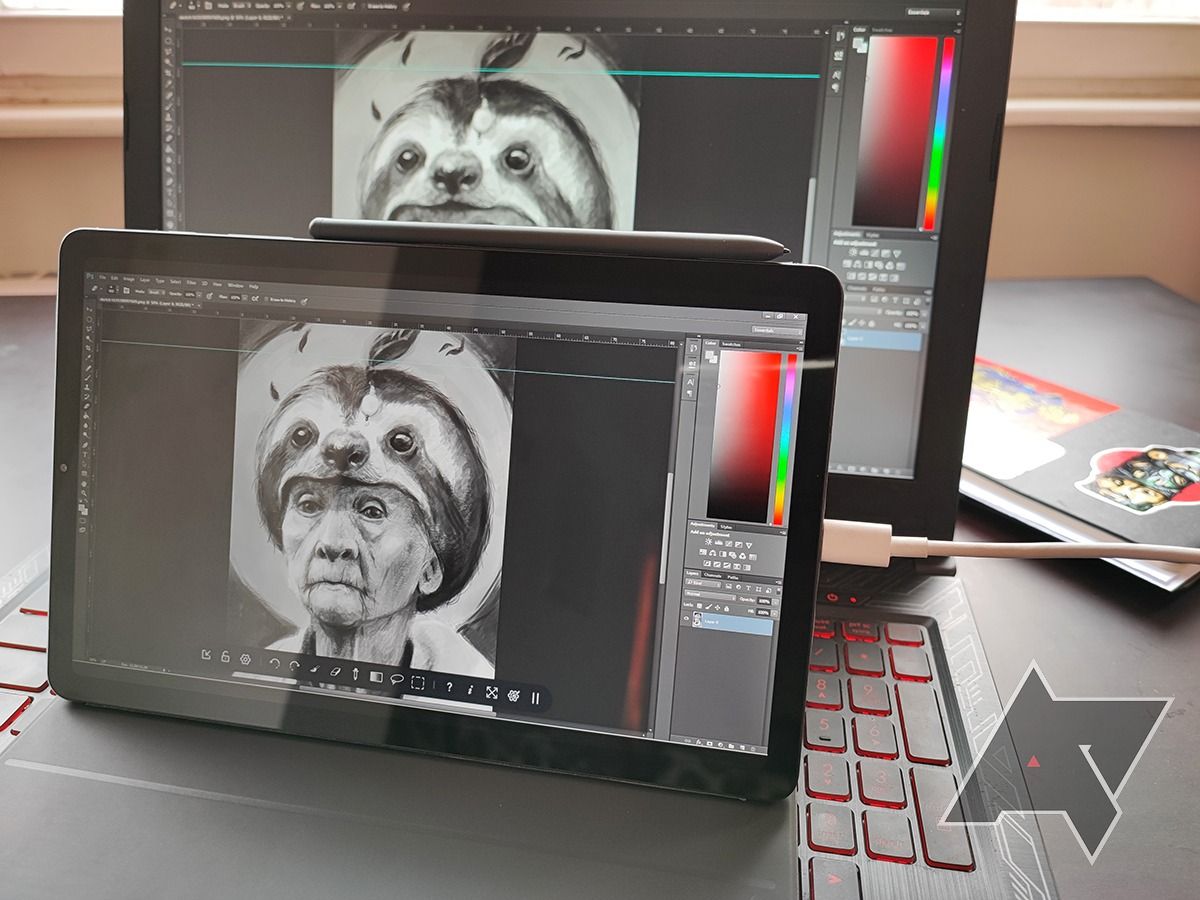Every digital artist starting out has to make a decision first: buy a standalone tablet for drawing, or get a pen display that adds drawing capabilities to your PC or Mac. But what if you are having a hard time deciding what’s best for you? What if you want it both ways?
Turning your standalone tablet into a second monitor that supports pen input is a great idea, especially if you’ve decided to pick up one of the shiny new Samsung Galaxy Tab S8 models. An app like Devguru's EasyCanvas makes this process easy, transforming your iPad or Galaxy Tab into a pen display similar to Wacom’s Cintiq range.
I went hands-on with the application to find out if the affordable service can really give you a viable alternative to a $1,000+ professional device.
Pros:
- Mirrors or extends your display
- Supports both wireless and USB connections
- Works with Apple Pencil, S Pen, and Wacom styluses
- Fairly low latency
- Includes free trial
- MacOS and Windows compatible
Cons:
- Trial recently reduced from 14 to 3 days.
- Galaxy Tabs are the only supported Android devices for now
- Pen hover does not move the Windows cursor
- No virtual keyboard option
Installation and set up
The installation is straightforward. First you'll have to head over to the EasynLight website to download and install the EL Display Hub on your computer. From there you can jump over to the Play Store on your Galaxy Tab and download the appropriate version of the EasyCanvas app. There are two app options: one for those who want to sign up for an annual subscription and another for those who’d rather pay only once. It doesn't matter which you choose; you're getting the same features either way.
In the EL Display Hub, you’ll find a few settings you can adjust. If you are using multiple monitors already, you can select which monitor you’d like to mirror. You can also extend your display if you prefer, though. If your machine is a bit sluggish, you may want to switch to Medium or Low in the Performance Mode settings. The app also gives you a recommended resolution for the smoothest experience, but you are free to change that.
When you first hook up your tablet, you will have to use a wired connection to pair your two devices. After that you’re free to connect wirelessly so long as your EL Display Hub is running. It’s set to auto start when your system boots up by default, so you shouldn’t need to worry about that.
The latency is really low through USB, but when it comes to a wireless connection, it really depends on the type of Wi-Fi you have. Both devices must be connected to the same network, of course.
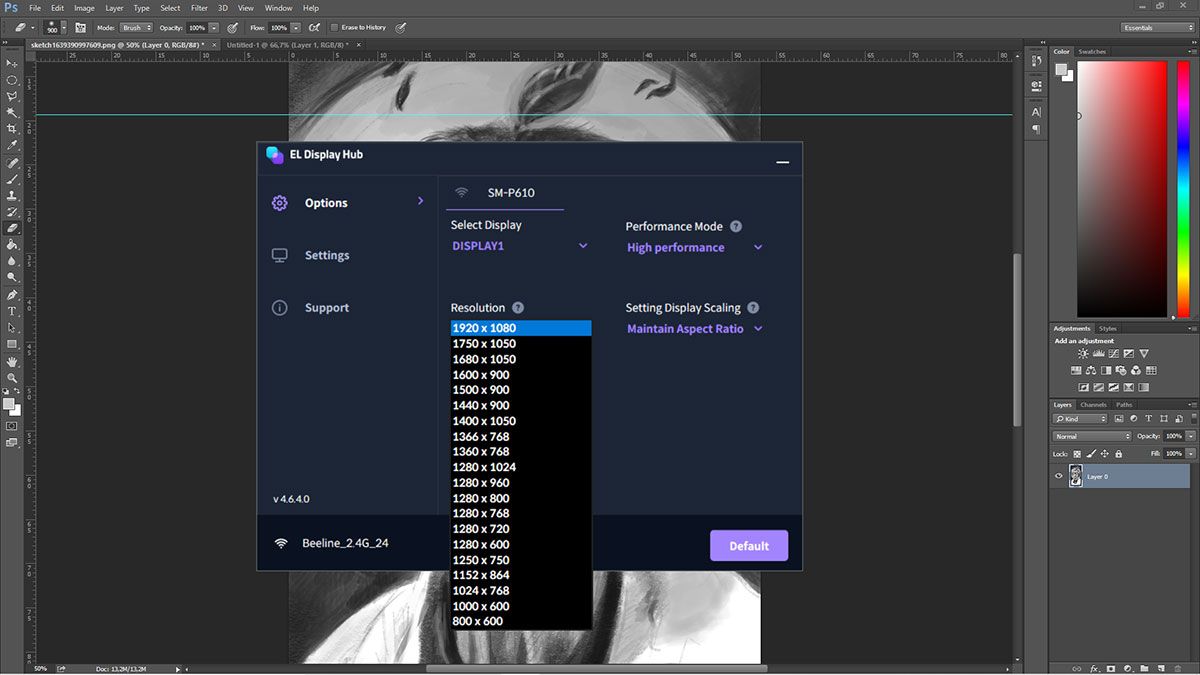
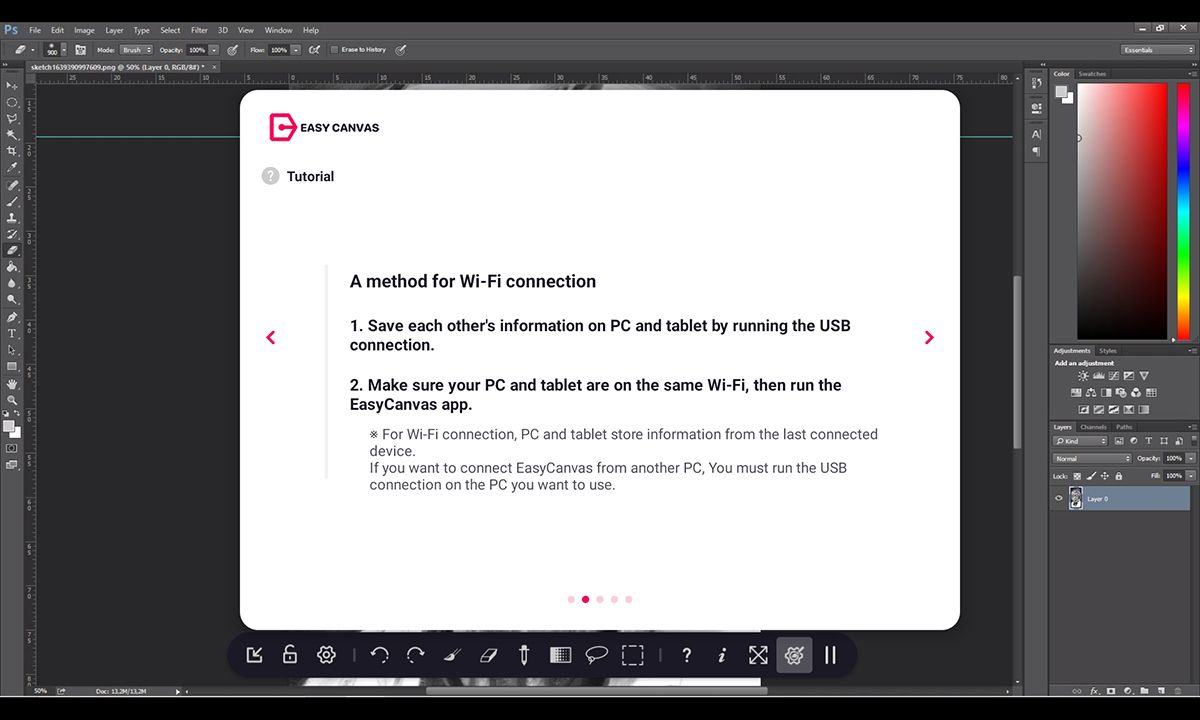
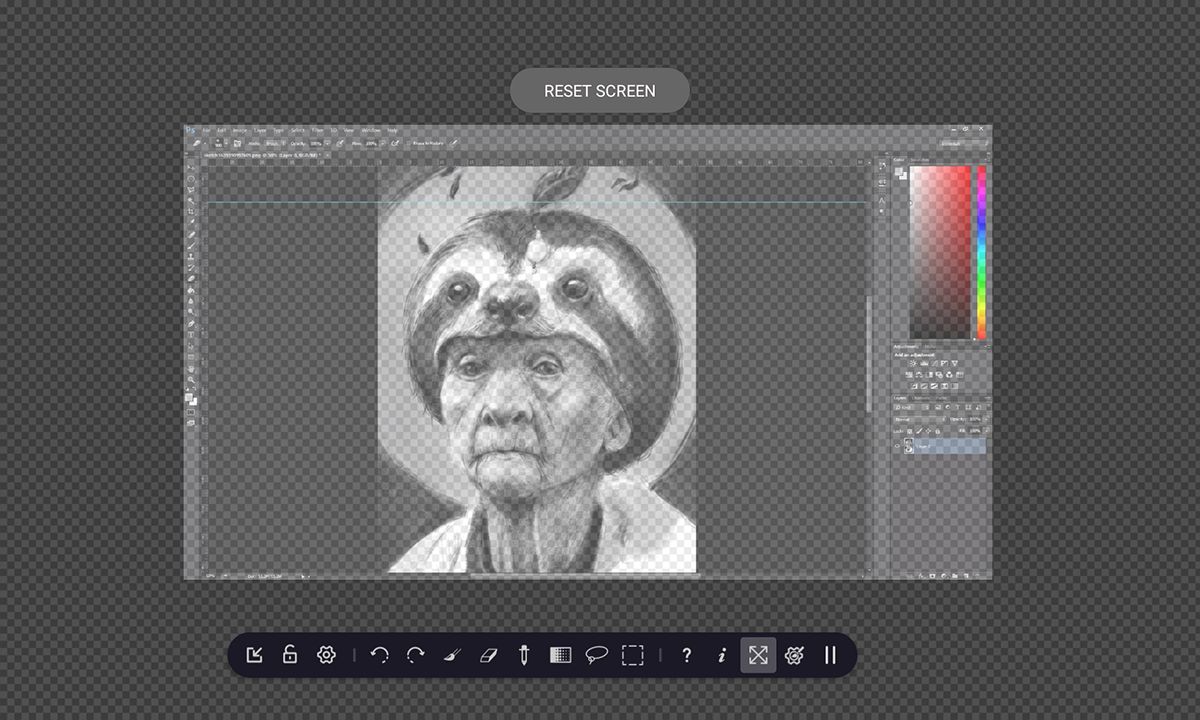
Your second display
Who doesn’t need at least two displays these days? Whether I use a second screen for having reference images off to the side while I’m drawing, researching articles, or just watching YouTube in the background, a second screen has become a productivity necessity for me. With EasyCanvas you’re getting that function together with pen and touch support.
When it comes to scrolling and consuming content, you should find things work smoothly enough wirelessly. I had no issues there. But if you’re looking at EasyCanvas, it’s likely because you want to turn that tablet of yours into a pen display for creating art using your desktop software. For that, I’d recommend wired connection.
The drawing experience
Stylus support alone is not enough to make for a good drawing experience. You need smooth pressure sensitivity first and foremost, and relatively low latency. EasyCanvas does this well, and it even gives you the option to customize your pressure curve. So if you prefer to press lightly and still get a bold line, it’s easy to adjust that in the app's toolbar. Full support for Samsung tablets and the S Pen enable its full range of features, like pressure sensitivity, tilt recognition, and palm rejection.
I’m using EasyCanvas on a Samsung Galaxy Tab S6 Lite, and drawing via a wired connection is pretty decent. The latency isn’t as low as it might get on a proper pen display tablet like a Wacom Cintiq or Huion Kamvas, but it’s not at all uncomfortable. When you opt for a wireless connection, you could run into occasional connection interruption, with blotches or little gaps in your lines reflecting as much. A little annoying here and there, but not a train wreck.
In terms of touch gestures, you get the basics in EasyCanvas: two-finger pinch to zoom, rotate and pan. It’s enough, but if you are working in Clip Studio Paint, it also recognizes a two-finger tap to undo which is nice.
I’m not wild about how right-clicking works, involving a one-second press, hold, and release of the pen. It behaves differently depending on which program you're using and where you’re clicking, too. iPad-exclusive competitor Astropad opts for a gesture that has you touching the screen with two fingers and then tapping with the pen which feels much more reliable.
Line quality with the pen is another crucial part of any drawing app or service. I did spot an occasional shoestring effect in some apps, with an unexpected thin taper appearing after I lift my pen. This tends to happen a bit more with quicker lines. I noticed some unwanted wobble in my lines as well. In programs like Clip Studio Paint or Krita, there is the option to bump up the smoothing or stabilization of your brush, which tends to solve the issue.
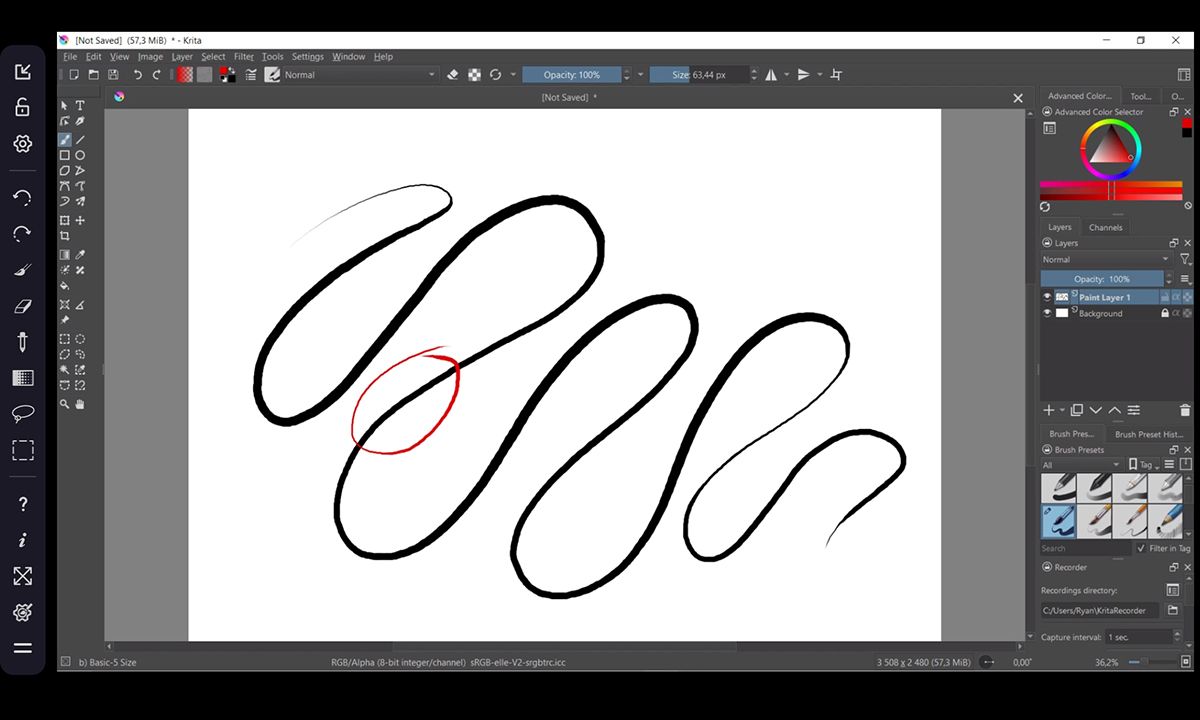
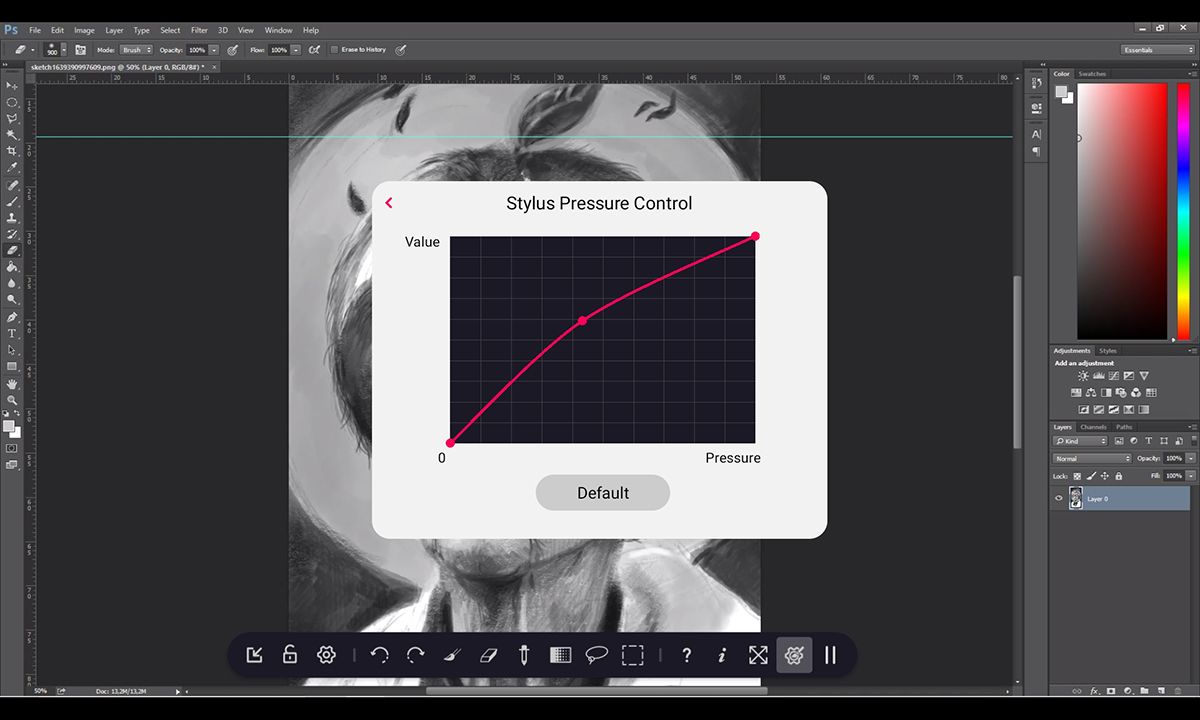
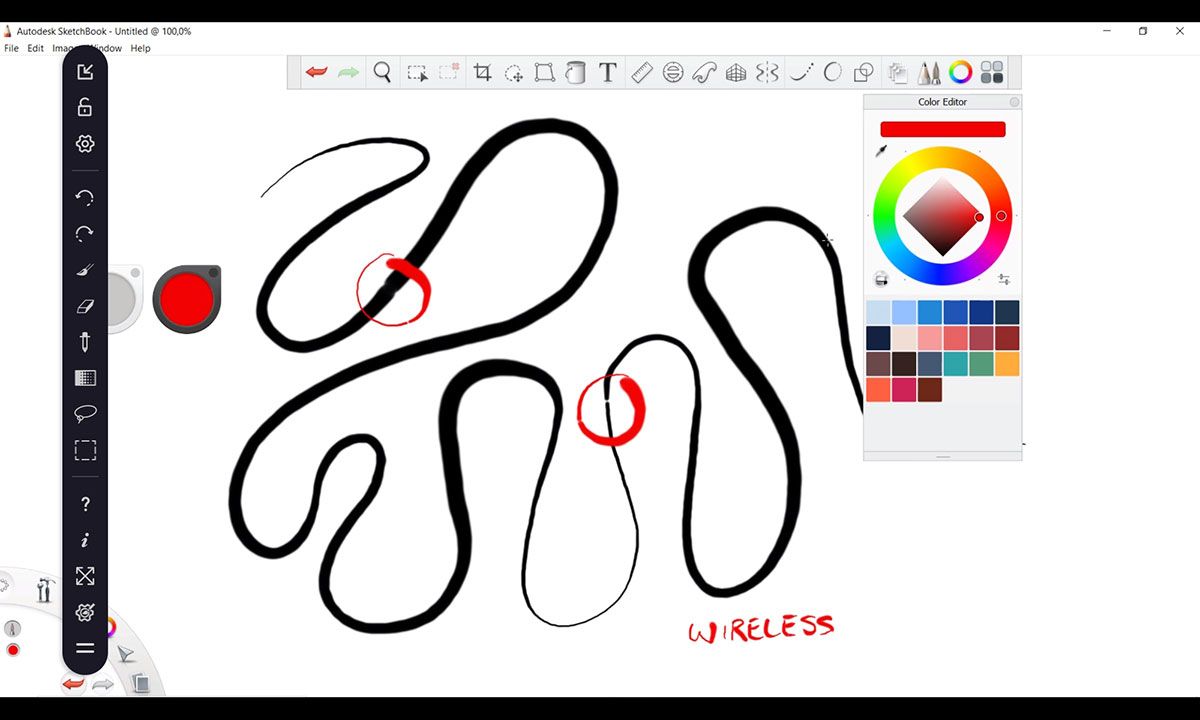
The toolbar
EasyCanvas includes a narrow toolbar that appears on the side of your tablet's screen. The bar consists of three sections, with eight of its sixteen buttons customizable with keyboard shortcuts of your choosing. By default, it gives you fairly universal shortcuts like undo and redo as well as quick access to the eraser, the brush, the eyedropper tool, and more.
Other buttons let you lock the toolbar in place, open up the settings for changing keyboard shortcuts, adjust the pressure curve of your pen, and resize the display. There are also the unnecessary Tutorial and About buttons. I don’t really see why there needed to be separate (and hardcoded) buttons on the toolbar for all these things rather than just having a single Settings shortcut to deal with them. I’d prefer a couple of extra buttons to customize instead.
Of course, you're not always going to be drawing and may not need that toolbar occupying a lot of space on your screen. The first icon on it collapses it into a single red floating button.
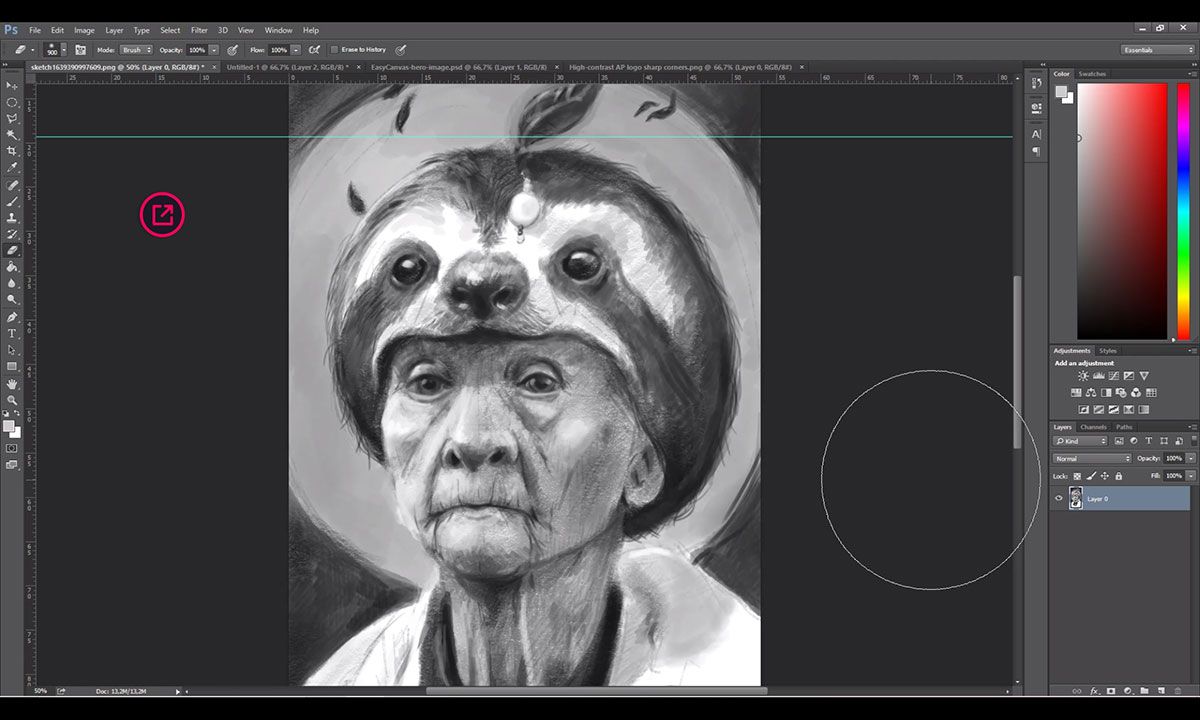
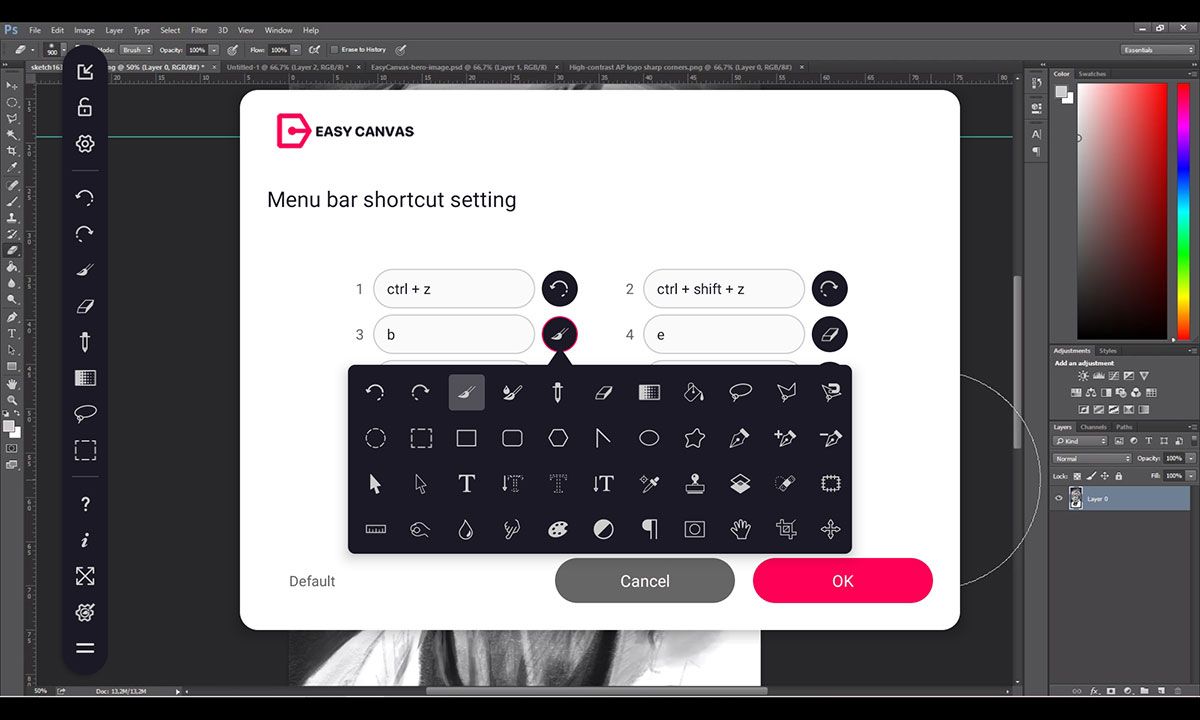
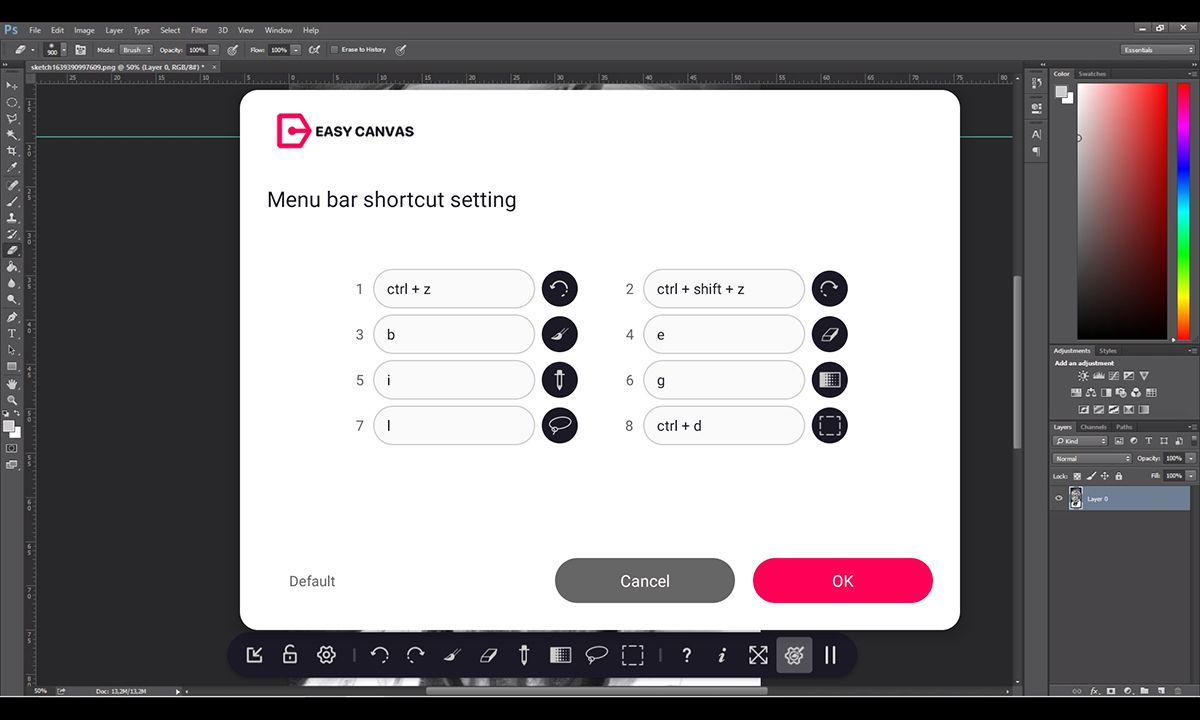
Pricing
Despite some of the shortcomings documented here, there is a reason why EasyCanvas stands out: pricing. You can either pay a mere $11 once off, or $6 annually if you go for the subscription route.
A similar well-established program is Astropad, as mentioned earlier. It starts at $30 for the Standard version and is exclusive to iPad users, making even clearer what a great price EasyCanvas offers. And in contrast to it, EasyCanvas works for both iPad and Galaxy Tabs on Windows and macOS, though unfortunately, no other Android tablets.
Conclusion
In terms of EasyCanvas' core features, I have no real complaints. Things are very smooth and responsive, and I’m quite happy with the app. One extra feature I’d like to see that would make using EasyCanvas that much better while your computer is in another room would be the addition of a floating keyboard. Another thing I miss is an easily accessible eraser function similar to what you get on Astropad: tap and hold a spot on the screen with one finger while erasing with your pen. I was actually surprised by just how much I liked that.
Would EasyCanvas really replace a dedicated pen display for digital art? That's unlikely, but it gets the job done and is a pretty nice option if you have an iPad or Galaxy Tab already. I’d say for most users it’s definitely enough, but professional illustrators are probably going to prefer a dedicated pen display.
If all you want is a wireless second display, and you’re not too bothered with pen support, check out Devguru's alternative app, TwoMon Air.

